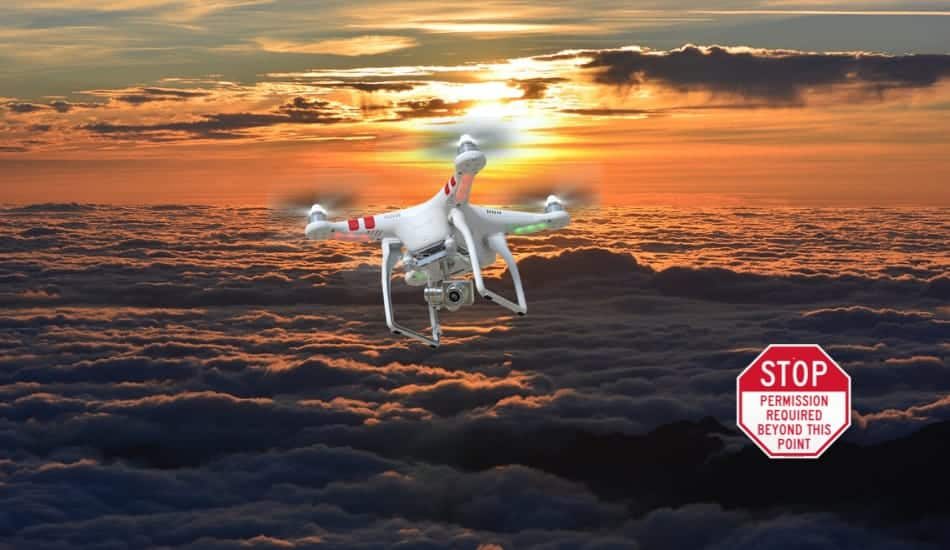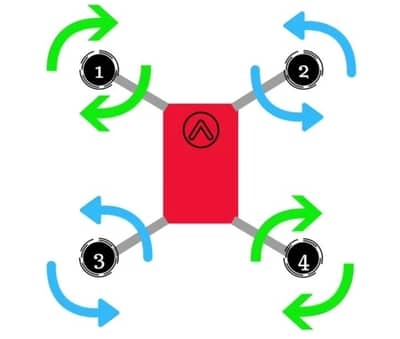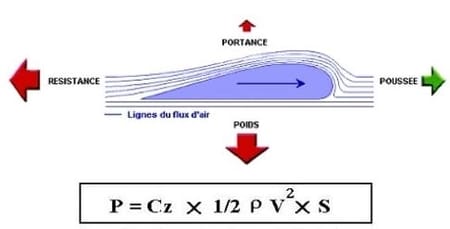How High Can a Drone Fly?

Many people when they see me fly a drone, ask what is the maximum height a drone can fly? Someone will say: “Sky is the limit”, but obviously it is not so! It sounds strange but there is more than one correct answer for this question. Aeronautical standards, the laws of physics and ultimately even the same technology that allows us to remotely pilot a drone, prevent us from having complete freedom of maneuver in the range, and of course in height. So let’s see what are the aspects that influence the maximum flight height of a drone. By digging a little literature, I found some interesting answers about this topic.
So How High Can a Drone Fly? The limit to which a drone can fly, depends on its power, the capacity of the battery, the Wi-Fi and the signal that the antennas are able to transmit. Today’s commercial drones have the ability to reach altitudes up to 20,000 feet. As far as the law is concerned, the permitted height to which drones are allowed to fly in United States is 400 feet, while in the European Union that limit is up to 500 feet.
Drone Maximum Height Limit
Although many civilian recreational drones can go very far and very high in the airspace, there are legal limits to which drones are allowed to fly. But what if there is no limits, how high would the drone actually be able to fly? Could the drone reach space? The maximum limit that drone could reach is about 20,000 feet (6000 meters), if we take into account laws of physics and some technical parameters that todays drone have. Main reason for this is the Earth’s atmosphere. When you fly at high altitudes, the air is much thinner, and drone is powered by propellers that use air density to push that air down. The density of air decreases very gradually as the altitude above sea level increases When we take the other important parameter, which is temperature, we must know is the higher the altitude, the lower the temperature. Today’s batteries do not tolerate low temperatures. Therefore if the rotors rotate more slowly, the drone will go down. If they turn faster, he will go up. The maximum altitude is well considered in relation to the level of the sea. The drone maximum will also depend on the atmospheric conditions of the day, via the famous atmospheric pressure.
Maximum Height According to the Law
Currently in the Europe for amateur flights the maximum limit is 70 meters, while for professional flights performed by pilots with a certificate the limit is 150 meters (500 feet). As for the United States, the maximum limit is 120 meters (400 feet). These limits can be modified by future amendments to the current law, so we advise you to check the updated regulation on the ENAC and FAA website, or by taking a look at the latest news regarding regulations. For professional drone pilots (special activities), they are subject to flight scenarios S1 – S2 – S3 – S4, which imposes heights and distances to be respected, but can allow them to fly out of sight and over great distances, subject to being declared for this type of flight and to have all the necessary authorizations.
If you want to learn more about drones, be sure to read What Does a Drone Look Like from the Ground?
Drone Breaks Record by Flying to 33,000 Feet
Yes, you read that right. This is the unofficial world record some drone has managed to achieve. On the Caters Clips YouTube channel, you can find a shot of a drone that has reached an altitude of 33,000 feet (10 km)! This is the altitude at which it is forbidden to fly in the United States (and in the rest of the world). We already said that the height at which the drones are allowed to fly is 400 feet for USA, and 500 feet for the Europe. This is a pretty dangerous altitude for flight, because at that altitude aircraft can fly. I wrote a special article about it, can a drone really bring down a plane, and if you are more interested in the topic, you can read it HERE. Also another reason why this is dangerous is the loss of connection signals or the battery could cause the drone to malfunction, and that drone could kill someone if it fell directly.
https://www.youtube.com/watch?v=smUEvnTYxi0
5 Tips For Flying at High Altitude
If you decide that you want to take beautiful panoramic photos from the sky, there are a few things to consider before you put your drone at high altitudes.
- Gain flight experience before flying at high altitudes
- Always check your battery level before the flight
- Be prepared for strong winds as you get higher
- Try to avoid restricted areas such as stadions, military and crowded areas
- Do not fly near airports
Maximum Height of the Main Drones on the Market
Each drone has its virtual “roof”, beyond which it cannot go. This may depend on how it is built, the control software and the transmission signal strength with the remote control (or smartphone-tablet). Do not forget then that some drones among those of medium-low range do not have the GPS and are oriented only through vertical sensors, small cameras that help them to understand where they are. These models, such as the small Tello by RyzeTech, cannot get too far off the ground because otherwise they would risk losing control over the position, performed via a lower camera. Regarding the maximum indoor height, where there is no coverage of satellite signals, most drone, like DJI have the maximum fly height which we will list in the table below. In general, the maximum height the drone can reach is specified among its technical characteristics. For convenience, these are drones that are available in the market:
| Drone | Maximum Height: | Availability: |
|---|---|---|
| 1. PHANTOM 4 | 6000 meters (19,680 feet) | Check Price |
| 2. DJI MAVIC PRO 2 | 6000 meters (19,680 feet) | Check Price |
| 3. DJI MAVIC PRO | 5000 meters (16,400 feet) | Check Price |
| 4. PARROT ANAFI | 4500 meters (14,750 feet) | Check Price |
| 5. DJI SPARK | 4000 meters (13,100 feet) | Check Price |
| 6. GDU SAGA | 3500 meters (11,480 feet) | Check Price |
| 7. RYZETECH TELLO | 10 meters (32 feet) | Check Price |
Physics Behind How Drones Fly
Overcoming the maximum height allowed by the law means at the very least interfering with general aviation, and we don’t even want to imagine what could happen if a drone, in the worst case, gets into the engine of an airplane or in the tail blades of a helicopter! At high altitudes, problems appear and intensify due to the rarefaction of the air, the change in temperature and humidity, the presence of clouds or fog. So on what principle does a drone fly on? In order for a drone to fly, a lot of parts such as a motor, battery, flight controller, transmitter/receiver, etc. are working to create a flight mechanism. As mentioned earlier, the most common type of drone is the four-wing “quadcopter”. The part of the rotor (propeller) attached to the multicopter is called the rotor. The “rotation direction and speed” of this rotor is important as the principle of drone flight, and the key to the drone flying stably. Drones are powered by propellers that use air density and push that same air down to keep the drone at that height. If you are interested in learning more about physics behind how drones fly, you can find it HERE.
The drone has a mechanism that allows stable flight by rotating the rotors next to each other in opposite directions. The state where these adjacent rotors are rotating in reverse is the basis for stable flight, but the rotation of the front rotor is slower and the rotation of the rear rotor is faster, it moves forward. Also, when the drone moves to the right, the rotation speed of the right rotor is slow and the rotation speed of the left side is fast. When moving to the left, the reverse principle is applied. In this way, the drone can hover in the direction and speed of rotation of the rotor, and can move back and forth and left and right.

Reasons For Flying Stably Even When the Wind Blows
Nonetheless, due to the drone’s flight principle, the strength and direction of the wind will have an effect when flying over high locations. For such times, the drone is equipped with two sensors, a “processor” and a “gyro sensor”. These sensors serve as attitude defense sensors and are important sensors essential for stabilizing drone flight. The gyro sensor is a sensor that reads the rotation, and it is also installed in the smartphones we normally use. This gyro sensor detects the tilt and rotation of the aircraft. Based on the detected data, the number of motor outputs that rotate the propeller is adjusted. The processor is responsible for adjusting the motor output of this propeller. As a part that controls the flight principle of the drone, it is a gyro sensor that detects the tilt and movement of the entire aircraft, and a processor that changes the attitude of the aircraft such as the direction by adjusting the output of the propeller strength etc. That’s why.
What Affects Drone Maximum Altitude?
Flying in altitude, gives access to wonderful landscapes for our shots but induces certain constraints, often unknown to the general public, which does not have the aeronautical bases to be ready to fly in this environment which pushes our machines in their entrenchments. We will therefore try to shed light on the flight at altitude, its consequences on motorization and power, and precautions to take to make a safe flight in these rather extreme conditions for a drone.
Given the multitude of possible configurations of a multirotor drone, no precise data is available. Unlike an airliner, as the A380 for which the “max operating altitude” is determined by the manufacturer. Even for one of the most sold multirotor in the world like the DJI S800, no info is available on the maximum altitude. On some websites, like Microdrones, some info about Max Take-off altitude: 4000m and on their FAQ page they say they have successfully flown at 5000m and can go higher using other propellers. We need to look at 2 key factors to know what determines the drones maximum altitude.
1. The Limit of The Batteries At High Altitudes
Lithium batteries are sensitive to temperature, especially when the mercury falls, and require a minimum operating temperature so that the reaction of the various chemical elements is optimal. Here is a graph that shows us the discharge of a cell of 800mAh according to the ambient temperature:
Take for example a failsafe battery (minimum safe operating voltage) set to the standard value of 3.6V per element, the battery alarm or automatic return occur at very different times depending on the temperature:

- At a temperature of 25 ° C must consume 800mA to trigger the failsafe
- At 0 ° C the same security is activated after 500mA
- At -10 ° C only 300mA can be used before setting failsafe
It is clear that cold has a real influence on the autonomy of our drone. Conversely a temperature up to 60 ° C has very little effect on the duration of the flight. Fortunately our batteries heat up when they are in use and the autonomy of our drone is not the one given by this graph but nevertheless the temperature of the battery, especially at the beginning of the flight, will vary significantly.
2. How Drone Propellers Behave At High Altitudes
On a fixed wing (airplane, glider) the principle of flight applies thanks to their wings which, with their aerodynamic profile, create a vertical force called lift (P). Our multirotors are kept in the air only thanks to their propellers that create lift. Each of these can be compared to a wing. The parameter that will interest us in this formula is the density of the air (Rho) which varies according to the altitude and therefore vary the lift of our propellers.
At altitude, the density of the air therefore decreases the lift is also reduced. The propellers will have to turn faster to produce enough thrust and keep the drone in the air. And as we get to higher altitudes, the air is less and less,and the propellers have to spin faster and faster, to create thrust to keep the drone in the air, which is theoretically impossible.

Regulatory Altitude When Flying a Drone
It is easily seen, by aerodynamics, the capabilities of almost any radio-controlled drone are largely sufficient for recreational use, even in sport mode. But the regulation concerning the drone in Europe imposes a maximum elevation of 150 m compared to the point of take-off. In addition, aviation security prohibits flying over certain areas, such as:
- Urban areas: where there is a lot of people
- Different sensitive sites: airports, white house, nuclear power station, military field, etc.
- Wildfires and disaster sites: rescue missions, uragans, etc.
- The terrain can make sure that with a high take-off point, the 150 m limit is not enough at low altitude to avoid interfering with air traffic for example.
Conclusion
What we were able to learn in this article is that drones have a much higher range than is prescribed by law. Popular drones such as the DJI Phantom 4 have the technical capability to reach altitudes as up to 6,000 meters (19,500 feet), while the legal regulations for which a drone is allowed to fly in the United States are 400 feet and for the European Union it is 500 feet. Some countries do not have regulated rules for how high drone can fly, but most manufacturers, including DJI, have restricted their drones to the laws they have prescribed. While these laws are likely to change in the future, so will manufacturers have to adapt to these new laws. So don’t forget to follow the rules that are prescribed for your country, as drones can fly far beyond what is allowed. I hope you have found the information you want in this article, and if I omitted something feel free to leave a comment below.

